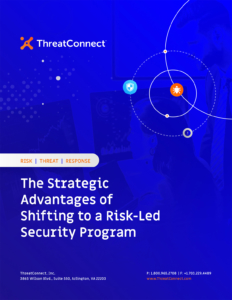Posted
Two of the major challenges facing most Security Operations Centers (SOCs) are patch management and alert prioritization. However, many organizations struggle with the complexity of keeping up-to-date with the latest vulnerabilities. They receive so many alerts that it becomes a time-draining attempt to sift through and figure out which alerts are the most important. This is where automated Risk Quantification comes into play.
Risk Quantification (RQ) utilizes scientific evidence and methods to empower businesses to make better decisions. It is a process of identifying risks that matter most to the business by quantifying them in terms of potential financial and operational impact. Taking it a step further, not only do security teams have to effectively communicate risks to the boardroom, but they also have to act quickly to patch any vulnerabilities without disrupting business processes.
According to a study conducted by the Ponemon Institute:
Only 44% of security professionals believe their organization is able to patch vulnerabilities at an adequate speed. Seventy-seven percent (77%) say they lack the resources necessary to keep up with the volume and pace at which patches are being released by vendors.
CVSS’ Doesn’t Cut It Anymore
Using the Common Vulnerability Scoring System (CVSS) is the industry standard approach to assessing and prioritizing alerts by the level of severity. But the biggest issue with CVSS’s is the lack of business context intertwined with its prioritization effort. Vulnerabilities are only scored on how easily each one can be exploited and how much general impact it could have. There is no specificity in industry, business impact, or financial risk. Furthermore, more than 13% of all Common Vulnerabilities and Exposures (CVEs) have a severity score between 9.0 and 10.0 (the highest possible value). Of those 13%, 7,628 (or about 47%) are scored at 10.0. The bottom line is that most vulnerability management teams are overwhelmed and are likely not focusing on the risks that matter most to their organization.
 With ThreatConnect’s Risk Quantification Platform, your security team can leverage multiple intelligence sources, risk, and financial models, and an accurately calculated ROI to make decisions on which critical vulnerabilities to fix first. Automation and enrichment of intelligence allow for your business to better assess threats and prioritize risks. Automation gives your security team a leg up by:
With ThreatConnect’s Risk Quantification Platform, your security team can leverage multiple intelligence sources, risk, and financial models, and an accurately calculated ROI to make decisions on which critical vulnerabilities to fix first. Automation and enrichment of intelligence allow for your business to better assess threats and prioritize risks. Automation gives your security team a leg up by:
- Proactively Modeling and Predicting Risk
- Establishing a Baseline, Mitigating, and Monitoring for changes
- Recommending and Driving Smart Action
With automated risk quantification, your team will be able to focus on the most important risks facing your business and reduce the chance of harm.
To learn more about how Risk Quantification can help your organization, check out our Whitepaper here!
